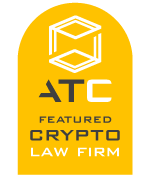
Over the last few years many professionals, including doctors, lawyers and small- to mid-sized business owners, have been taking advantage of a tax efficient way of withdrawing cash from their corporations called capital gains surplus stripping (CGSS). In a nutshell, this is possible when there is extra cash in the corporation bank account (typically in excess of $250,000), and instead of the professional just pulling the cash out as salary, dividend or a draw which could be taxed at the highest marginal tax rate (close to 54%), it is instead withdrawn as a capital gain, only 50% of which comes into income. This substantially reduces the tax burden on this money (to around 25%). They then use this money to pay off their personal mortgage, invest for their retirement, put a down payment on an investment property, or just for spending.
CGSS is accomplished by structuring a transaction that operates as a sale of shares of your professional corporation, thus converting the money received for the sale of those shares into a capital gain. The way this works (in VERY simple terms) is that the existing corporation is amended to create new share classes and a new corporation is created (the “Newco”). Then, the existing corporation can undergo a special transaction that creates new shares which are then sold to Newco, the proceeds of which can be used to offset existing shareholder loans or paid in cash to the shareholder. In both cases the income is characterized as a capital gain since the shares that were sold are considered capital property.
Keep in mind that all these transactions are between the professional and her or his corporations, and so it is all executed by the same person contemporaneously but it can also involve the professional’s spouse. The end result is that when the dividend is converted into shares or shares are sold, since shares are considered capital property, the payment for those shares is considered a capital gain, and capital gains, as illustrated above, are taxed preferentially.
CGSS is a very complex transaction but highly tax efficient. It is a way of extracting retained earnings, money which is sitting in the corporation bank account, which would otherwise be taxed at a high rate if simply withdrawn by the corporation’s principal.
The process, if done properly by experienced tax professionals, is perfectly legal and permissible…for now. Our concern is that the government may decide that this mechanism is too costly for the public purse and may close it off or seek to increase the capital gains inclusion rate to more than 50%, which would make this procedure less beneficial.
The lawyers at Grinhaus Law Firm have been executing these types of transactions for several years and continue to help professionals maximize the benefits of extracting retained earnings in the most tax efficient way. Please contact us to learn more, we are always happy to help. For more information on this topic, call or email us to see how we can help.
PLEASE NOTE: THIS IS NOT INTENDED TO BE LEGAL ADVICE AND SHOULD NOT BE RELIED ON AS SUCH. IT IS IMPORTANT THAT YOU CONSULT WITH A LICENSED PROFESSIONAL.





